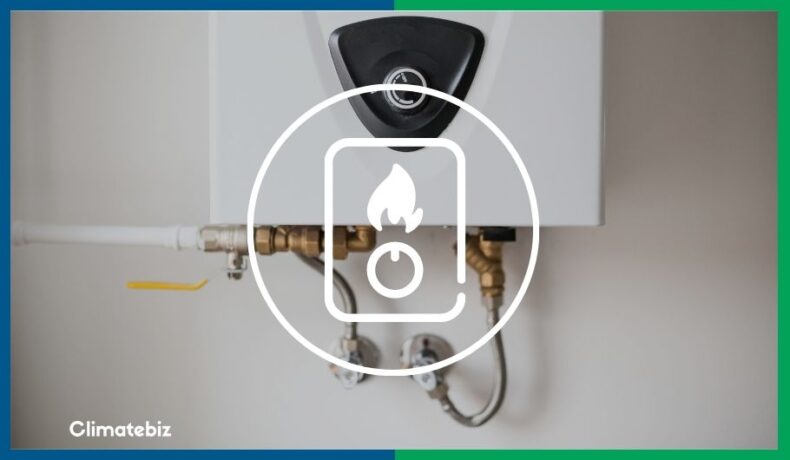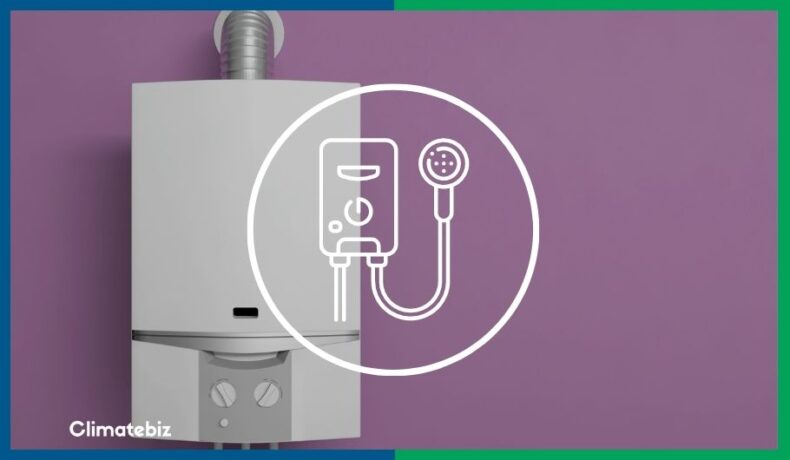
Low flow rate, poor temperature control, and sky-high installation costs — choosing the correct size tankless water heater can be the difference between you and your family dealing with these issues.
If you’re in the market for one of these tankless heaters but unsure how to size one correctly, you’ve come to the right place!
In this article, we’ll highlight the factors you need to consider when sizing your tankless heater. Additionally, we’ll walk you through an easy-to-follow, 3-step process to set you up for success!
Affiliate Disclaimer
Table of Contents
What Are The Different Tankless Water Heater Sizes?
First and foremost, the best sizing factor for a tankless water heater is flow rate, measured in gallons per minute (GPM). As such, you don’t size these systems as you would conventional storage tank units.
Tankless heaters come with different flow rates; these systems can deliver up to around 10 GPM (at a decent temperature rise).
A tankless system’s flow rate will largely depend on whether the unit is suited for whole-house or point-of-use applications.
Whole-House
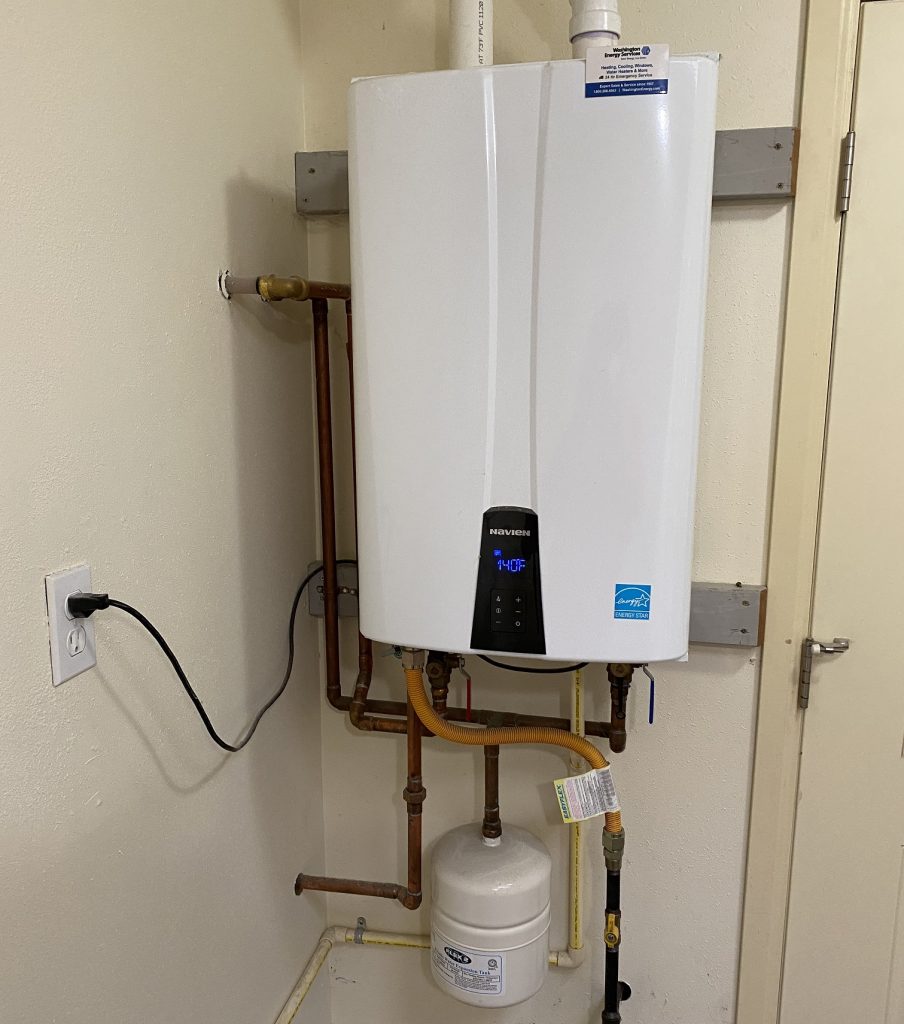
Source: Home Remodeling Costs Guide
Whole-house water heater units, also known as centralized water heaters, are large and have high gallons per minute (GPM) flow rate. This increased capacity means that they can handle water pressure demand from more than one faucet at a time.
For instance, a whole-house water heater can supply hot water to a running shower, dishwasher, and washing machine, all at the same time. Naturally, this makes them a more expensive option than their point-of-use counterparts.
Generally, a whole-house system produces between 5 – 10 gallons per minute.
Point-Of-Use
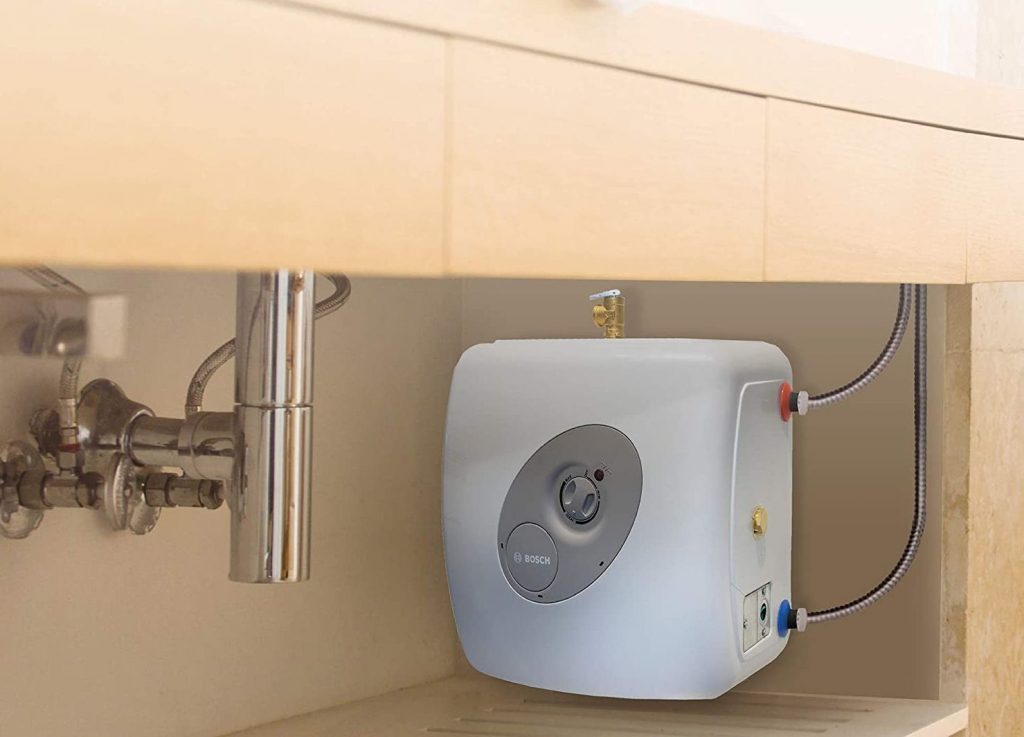
Source: Tankless Club
A point-of-use (POU) tankless water heater is smaller than a whole-house system. As such, they have a lower flow rate, so they can only cater to the needs of one faucet/outlet.
On the upside, they are cheaper, and their size means that you can place them inside cramped spaces, like a closet or cabinet.
This water heater can come in handy for additional faucets that your current system may not cover. For instance, a POU water heating system would be perfect for a property with a separate building/room.
Generally, a POU unit produces between 0.5 – 2 gallons of hot water per minute.
Tankless Water Heater Sizing — Factors To Consider
To size your water heater correctly, you’ll need to consider the following factors:
Households Flow Rate
If you read our article, A guide to Tankless Water Heaters, you’ll recall that these systems only heat water on demand. This is because, unlike conventional storage water heaters, these tankless systems do not come with a storage component.
What does this have to do with flow rate?
A conventional storage system heats its storage tank intermittently to maintain the appropriate water temperature while a tankless system does not; a tankless heater has to heat water as it travels through its systems, slowing down the flow rate.
It, therefore, stands to reason why flow rate is seen as the most important tankless water heater metric.
Example
The following are examples of appliances flow rates in Gallons Per Minute (GPM):
| Appliance | Flow Rate (Gallons Per Minute) |
|---|---|
| Toilet | 2-3 |
| Shower | 1.5 -3.0 |
| Bathroom/Kitchen Faucet | 2-3 |
| Dishwasher | 2-4 |
| Washing Machine | 3-5 |
Temperature Rise
Temperature rise is the difference between the temperature of groundwater (water flowing in) and the set temperature of your tankless water heater (water flowing out).
Groundwater temperature varies according to location, so it’s best that you refer to a groundwater temperature map (or measure your water temperature) before you purchase your water heater. We’ll address this further in the section to come.
Household Size
This encompasses both the literal size of your home’s stature (distance between rooms and, therefore, pipes) and the number of occupants living in your home.
Electric/Gas-Fired Tankless Water Heater
Electric and gas-fired tankless water heaters differ substantially from one another — they do not have the same levels of efficiency.
Example
A gas-fired tankless water heater can meet a 70 °F temperature rise with a flow rate of 5.0 – 5.5 GPM, whereas a large (36 kW) electric heater maxes out at a little over 3.0 GPM.
How Do You Correctly Size a Tankless Water Heater For Your Home?
Step 1: Determine Maximum Temperature Rise
As previously mentioned, this is the difference between the tankless set temperature and the wintertime cold water temperature.
To determine your temperature rise, use the following calculation:
Desired Output Temperature – Incoming Water Temperature = Temperature Rise
How To Determine Groundwater Temperature
There are two ways for you to determine your groundwater temperature:
- You can refer to a groundwater temperature map (as seen below).
- Alternatively, you can run a thermometer under a cold-water faucet to help you determine the exact temperature of your groundwater.
The following map illustrates the varying groundwater temperatures throughout the U.S.
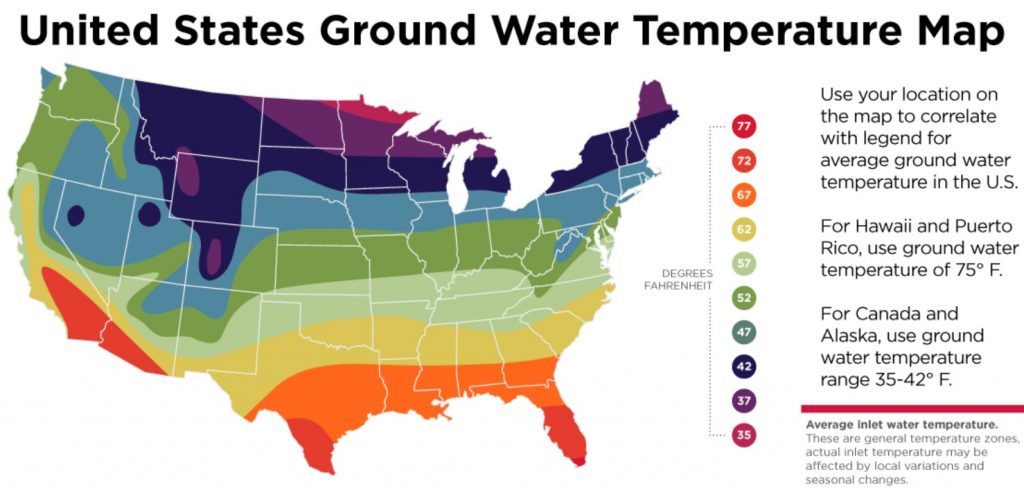
Source: Rinnai
Example
Let’s use an example to put the above formula into practice.
Our home is located on the central coast of California. We’ll estimate that the groundwater temperature is 55 ℉ (12.7 ℃) based on the map.
Next, we need a set temperature from our tankless water heater; let’s assume a set temperature of 110 ℉ (43 ℃).
Based on the above values, our calculation will look as follows:
110 – 55 = 55
Therefore, our household will require a temperature rise of 55 ℉ (12.7 ℃).
Step 2. Peak Hot Water Demand Of The Home
Now you need to determine how many hot water fixtures you’ll be using simultaneously (during peak use) to calculate your water use in Gallons Per Minute (GPM).
How To Determine Flow Rate Of An Appliance
If you don’t know the flow rate, estimate it by holding a pan or bucket under the faucet or showerhead and measure the flow for a minute. Measure the amount of water and multiply by 60 to get the gallons per minute (or liters per minute).
Example
For our example, we’ll use the following:
- Shower (x2): 2 GPM each
- Washing Machine: 2 GPM
Total: 6 GPM
Step 3: Select The Appropriate Unit/s
Finally, it’s time to select a unit capable of meeting your flow rate and temperature rise demands.
How To Determine The Appropriate Unit
Most tankless water heater manufacturers provide their customers with product-related spec sheets.
Aside from general specs, these sheets often come with flow charts (see below).

Source: Rinnai
Example
For our example, we need a tankless heater that can provide us with:
- A temperature rise of 55 ℉ (12.7 ℃)
- A peak flow rate of 6 GPM
Looking at the above chart from Rinnai, we can determine that any of the orange or green color-coded models will meet our demands.
Can A Tankless Water Heater Be Too Big?
Yes, a tankless water heater can be too big for a household.
While a larger than necessary tankless heater won’t cause any damage to your household, it won’t carry any advantages. In fact, there will be considerable cost-related disadvantages.
Tankless water heaters don’t come cheap. Their installation costs, in particular, are substantial. So it stands to reason that purchasing a larger than necessary heater will come with the higher unit, installation, and operation costs.
Sizing A Tankless Water Heater For A Family
Unfortunately, this very common question does not have a concrete answer.
Sure, you may have come across some attempts at answering it, but in all honesty, there are too many variables to consider.
Flow rate, number of occupants, groundwater temperature, and the type of tankless heater (gas-fired or electric) are just some of the factors that you’d need to consider.
As such, it’d be unrealistic and even irresponsible for us to give you exact numbers.
Instead, we suggest that you measure your flow rate and your temperature rise to determine the tankless water heater size that best suits your circumstances.
Final Thoughts
Now, let the sense of relief wash over you — see, that was a lot less complicated than you may have anticipated.
Knowing how to size a tankless water heater doesn’t have to be difficult. All you need to do is determine your temperature rise, calculate your flow rate, and select a tankless unit that meets your demands.
It’s as simple as that!
If, however, you feel that you’re still struggling or have any related questions, we invite you to join our community and get in touch with one of our experts.



